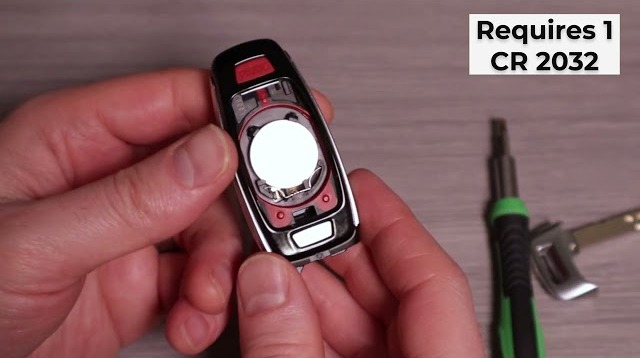That sinking feeling when your key fob doesn’t respond can be frustrating. Whether you’re trying to unlock your doors or start your engine, a dead key fob battery can throw a wrench in your day. Fortunately, for owners of recent Audi models (specifically the 2019–2024 A4, A5, A6, A8, Q5, Q7, and TT), replacing the battery is a surprisingly simple DIY task you can tackle at home.
This blog post will guide you through the process, inspired by a helpful video tutorial that makes it even easier to follow along. Say goodbye to expensive dealership battery replacements and hello to the satisfaction of a quick and easy fix!
Why DIY Your Key Fob Battery?
- Save Money: Dealerships often charge a premium for simple battery replacements. Doing it yourself costs just the price of a new battery.
- Save Time: No need to schedule an appointment and wait around. You can get this done in a few minutes at your convenience.
- It’s Easier Than You Think: Modern key fobs are designed with relatively easy access to the battery compartment.
What You’ll Need:
Based on the video, you’ll likely need the following:
- A New CR2032 Battery: This is the most common type of coin cell battery used in these Audi key fobs. You can find these at most drug stores, supermarkets, and electronics stores. It’s always a good idea to double-check your owner’s manual to confirm the exact battery type. You can also get it from Amazon: https://amzn.to/4iOjvYz
- A Small Flathead Screwdriver or a Plastic Pry Tool: This will be used to gently open the key fob casing. Using a plastic tool is recommended to avoid scratching the fob.
Step-by-Step Guide:
While the exact steps might vary slightly depending on your specific Audi model year, the general process is as follows:
- Locate the Release Mechanism: Most of these Audi key fobs have a small release button or sliding switch. This is often located on the side or back of the fob.
- Release the Emergency Key (if applicable): Some models have a physical emergency key that slides out after pressing the release. Remove this key.
- Gently Pry Open the Casing: Once the emergency key is removed (or if your fob doesn’t have one), you’ll likely see a small notch or seam where you can insert your flathead screwdriver or plastic pry tool. Gently twist or pry to separate the two halves of the key fob casing. Be careful not to apply too much force, as you don’t want to damage the plastic.
- Identify the Old Battery: Once the casing is open, you’ll see the old CR2032 battery. Take note of its orientation (+ side up or down) so you can install the new one correctly.
- Remove the Old Battery: You can usually gently lift the battery out with your fingertip or the edge of your plastic pry tool.
- Insert the New Battery: Place the new CR2032 battery into the compartment, ensuring the polarity (+ and -) matches the markings inside the casing.
- Reassemble the Key Fob: Carefully snap the two halves of the key fob casing back together. Ensure they are securely closed.
- Test Your Key Fob: Try locking and unlocking your car to confirm that the new battery is working correctly.
Tips for Success:
- Work on a Clean Surface: This will prevent you from losing any small parts.
- Be Gentle: Avoid using excessive force when prying open the casing to prevent damage.
- Double-Check the Battery Type: Ensure you’re using the correct CR2032 battery for your specific key fob.
- If You’re Unsure, Watch the Video! The visual guide can be incredibly helpful in understanding the specific steps for your model.
Conclusion:
Replacing the battery in your Audi key fob for the 2019-2024 A4, A5, A6, A8, Q5, Q7, or TT models doesn’t have to be a daunting task. With a new CR2032 battery and a little bit of careful prying, you can easily restore your key fob’s functionality and save yourself time and money. So, the next time your key fob starts to feel sluggish, remember this simple DIY solution!
Disclaimer: This blog post is for informational purposes only. Always refer to your vehicle’s owner’s manual for specific instructions and safety precautions. If you are uncomfortable with this procedure, it is always best to consult with a qualified automotive technician.

